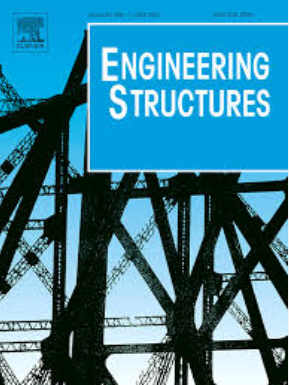Coupled data/physics-driven framework for accurate and efficient structural response simulation
IF 5.6
1区 工程技术
Q1 ENGINEERING, CIVIL
引用次数: 0
Abstract
Achieving accurate and computational efficient simulations is vital for the design, construction, and maintenance of buildings and infrastructures. Traditional physics-driven methods, such as the finite element method, struggle to balance precision with computational efficiency. In contrast, data-driven methods, such as deep neural networks, fall short in generalization and robustness. Therefore, this study proposes a coupled data/physics-driven simulation framework to harness the advantages of data- and physics-driven models, to achieve accurate and computational-efficient structural response simulation. First, the overall concept of the proposed framework is outlined, including modeling and separating the target structure into data- and physics-driven sections. Based on the discussion of the fundamental approaches for data-driven simulation, an innovative attention-enhanced stacked regression neural network is proposed to improve the accuracy of data-driven section. This architecture integrates dataset augmentation method, stacked regression, and attention-based feature enhancement. Furthermore, physics-driven modeling and the integration between the data- and physics-driven models are investigated. Finally, a case study is conducted based on a three-story frame/shear-wall building. The results demonstrate that the proposed method achieves accuracy comparable to refined finite element models, with an average stress/strain deviation no more than 0.1 %. Meanwhile, the required computational time is similar to that of a much-simplified model, with a speed-up ratio exceeding 70 times.
求助全文
约1分钟内获得全文
求助全文
来源期刊

Engineering Structures
工程技术-工程:土木
CiteScore
10.20
自引率
14.50%
发文量
1385
审稿时长
67 days
期刊介绍:
Engineering Structures provides a forum for a broad blend of scientific and technical papers to reflect the evolving needs of the structural engineering and structural mechanics communities. Particularly welcome are contributions dealing with applications of structural engineering and mechanics principles in all areas of technology. The journal aspires to a broad and integrated coverage of the effects of dynamic loadings and of the modelling techniques whereby the structural response to these loadings may be computed.
The scope of Engineering Structures encompasses, but is not restricted to, the following areas: infrastructure engineering; earthquake engineering; structure-fluid-soil interaction; wind engineering; fire engineering; blast engineering; structural reliability/stability; life assessment/integrity; structural health monitoring; multi-hazard engineering; structural dynamics; optimization; expert systems; experimental modelling; performance-based design; multiscale analysis; value engineering.
Topics of interest include: tall buildings; innovative structures; environmentally responsive structures; bridges; stadiums; commercial and public buildings; transmission towers; television and telecommunication masts; foldable structures; cooling towers; plates and shells; suspension structures; protective structures; smart structures; nuclear reactors; dams; pressure vessels; pipelines; tunnels.
Engineering Structures also publishes review articles, short communications and discussions, book reviews, and a diary on international events related to any aspect of structural engineering.
 求助内容:
求助内容: 应助结果提醒方式:
应助结果提醒方式:


